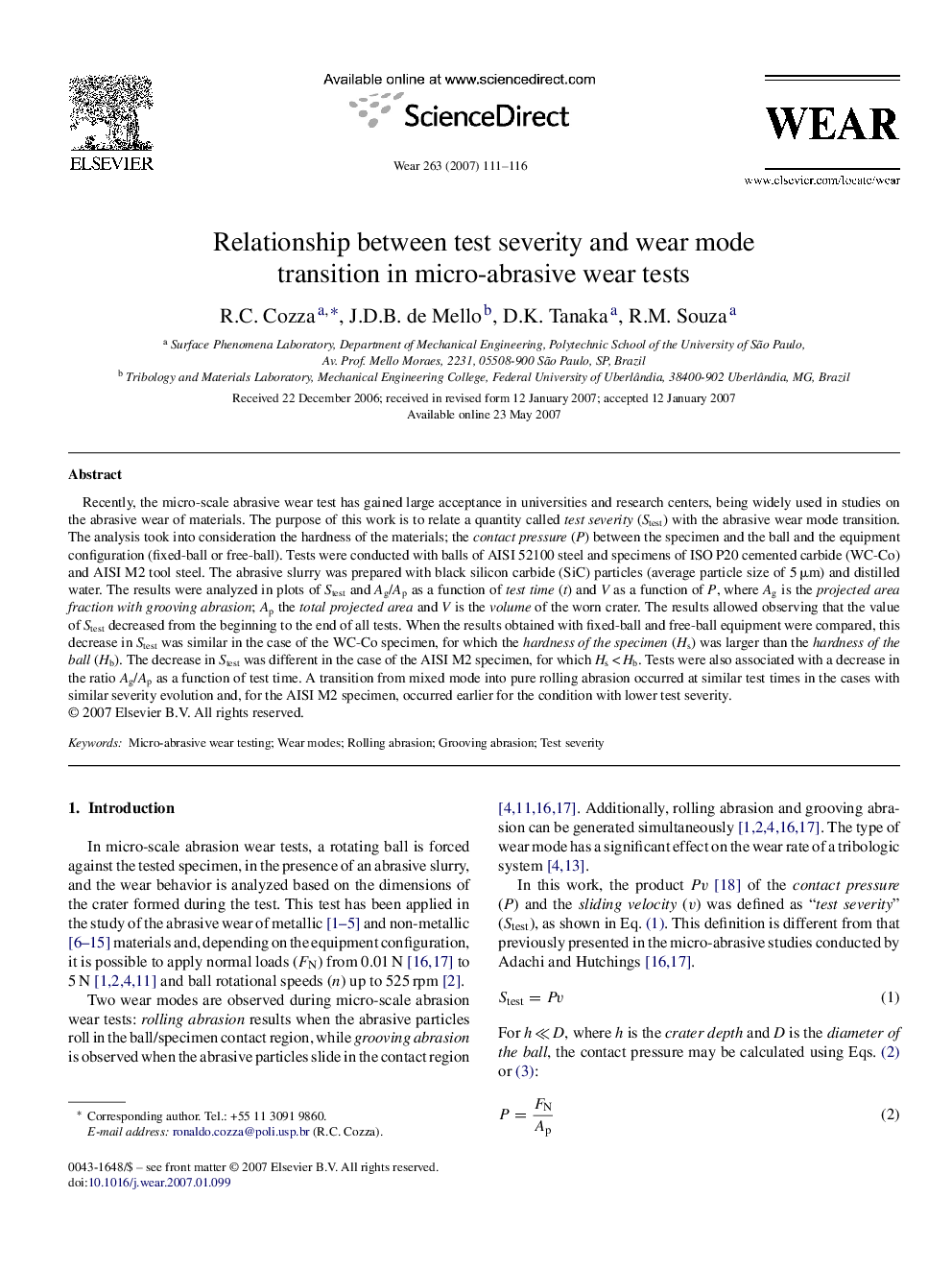| Article ID | Journal | Published Year | Pages | File Type |
|---|---|---|---|---|
| 619806 | Wear | 2007 | 6 Pages |
Abstract
Recently, the micro-scale abrasive wear test has gained large acceptance in universities and research centers, being widely used in studies on the abrasive wear of materials. The purpose of this work is to relate a quantity called test severity (Stest) with the abrasive wear mode transition. The analysis took into consideration the hardness of the materials; the contact pressure (P) between the specimen and the ball and the equipment configuration (fixed-ball or free-ball). Tests were conducted with balls of AISI 52100 steel and specimens of ISO P20 cemented carbide (WC-Co) and AISI M2 tool steel. The abrasive slurry was prepared with black silicon carbide (SiC) particles (average particle size of 5 μm) and distilled water. The results were analyzed in plots of Stest and Ag/Ap as a function of test time (t) and V as a function of P, where Ag is the projected area fraction with grooving abrasion; Ap the total projected area and V is the volume of the worn crater. The results allowed observing that the value of Stest decreased from the beginning to the end of all tests. When the results obtained with fixed-ball and free-ball equipment were compared, this decrease in Stest was similar in the case of the WC-Co specimen, for which the hardness of the specimen (Hs) was larger than the hardness of the ball (Hb). The decrease in Stest was different in the case of the AISI M2 specimen, for which Hs < Hb. Tests were also associated with a decrease in the ratio Ag/Ap as a function of test time. A transition from mixed mode into pure rolling abrasion occurred at similar test times in the cases with similar severity evolution and, for the AISI M2 specimen, occurred earlier for the condition with lower test severity.
Keywords
Related Topics
Physical Sciences and Engineering
Chemical Engineering
Colloid and Surface Chemistry
Authors
R.C. Cozza, J.D.B. de Mello, D.K. Tanaka, R.M. Souza,
